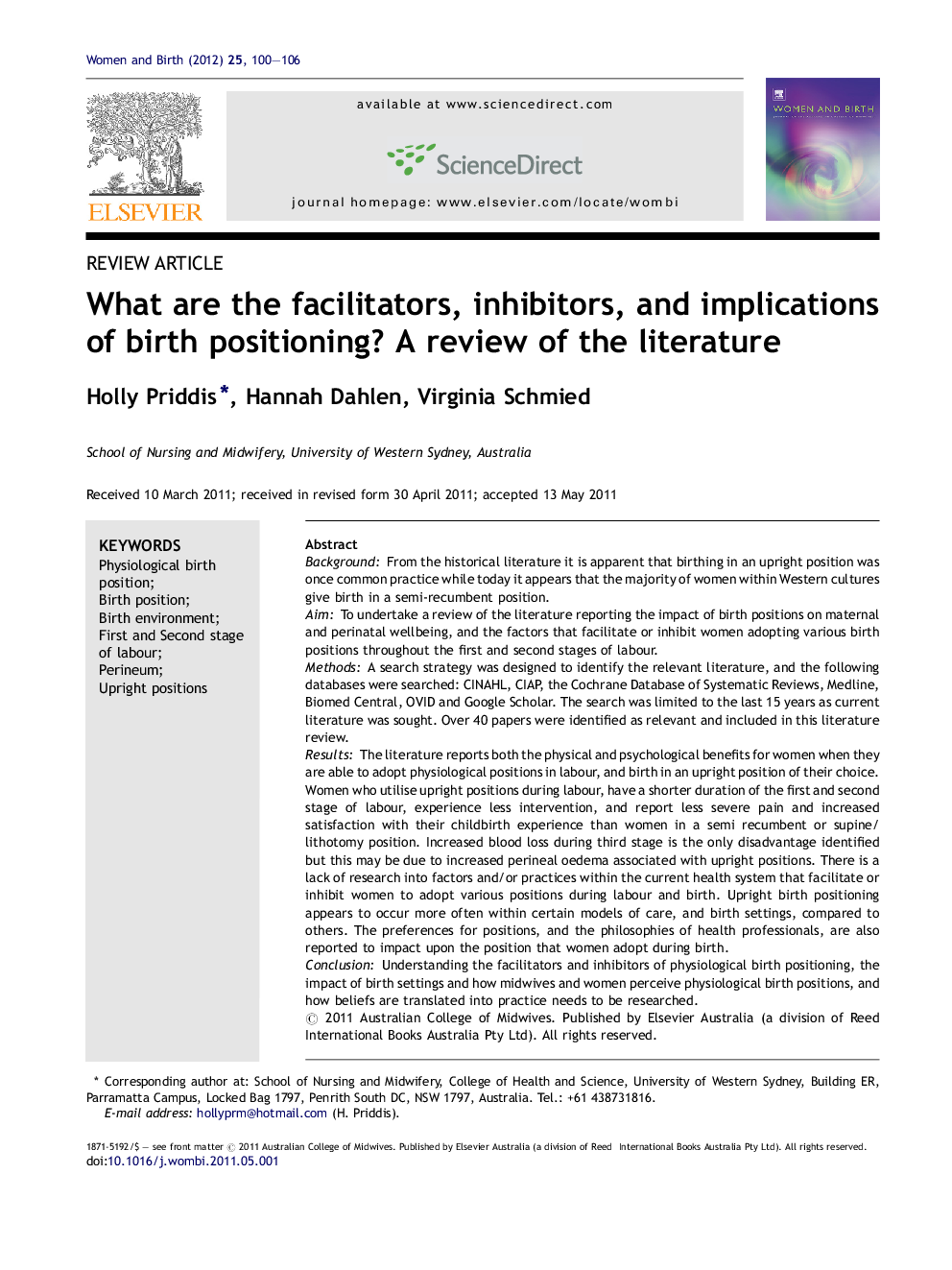| Article ID | Journal | Published Year | Pages | File Type |
|---|---|---|---|---|
| 2636358 | Women and Birth | 2012 | 7 Pages |
BackgroundFrom the historical literature it is apparent that birthing in an upright position was once common practice while today it appears that the majority of women within Western cultures give birth in a semi-recumbent position.AimTo undertake a review of the literature reporting the impact of birth positions on maternal and perinatal wellbeing, and the factors that facilitate or inhibit women adopting various birth positions throughout the first and second stages of labour.MethodsA search strategy was designed to identify the relevant literature, and the following databases were searched: CINAHL, CIAP, the Cochrane Database of Systematic Reviews, Medline, Biomed Central, OVID and Google Scholar. The search was limited to the last 15 years as current literature was sought. Over 40 papers were identified as relevant and included in this literature review.ResultsThe literature reports both the physical and psychological benefits for women when they are able to adopt physiological positions in labour, and birth in an upright position of their choice. Women who utilise upright positions during labour, have a shorter duration of the first and second stage of labour, experience less intervention, and report less severe pain and increased satisfaction with their childbirth experience than women in a semi recumbent or supine/lithotomy position. Increased blood loss during third stage is the only disadvantage identified but this may be due to increased perineal oedema associated with upright positions. There is a lack of research into factors and/or practices within the current health system that facilitate or inhibit women to adopt various positions during labour and birth. Upright birth positioning appears to occur more often within certain models of care, and birth settings, compared to others. The preferences for positions, and the philosophies of health professionals, are also reported to impact upon the position that women adopt during birth.ConclusionUnderstanding the facilitators and inhibitors of physiological birth positioning, the impact of birth settings and how midwives and women perceive physiological birth positions, and how beliefs are translated into practice needs to be researched.
